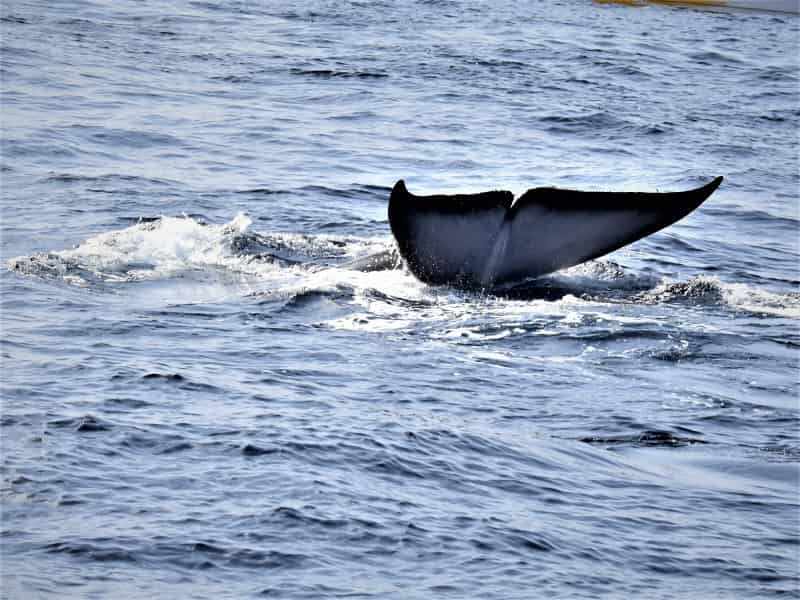How long can whales live?
Committed to all quality standards.
Among the largest mammal species worldwide, whales are also the ones that can live the longest. Many studies have been carried out by researchers and have determined that, while some have a life expectancy between 80 and 90 years, some specimens can live up to 100 and more.
Their longevity depends on many factors. Studies have been very difficult to carry out, however, with some data and estimates, marine biologists have been able to determine whale lifespan with a pretty good degree of accuracy, for each species in particular.
Some factors that affect the life of whales
Many scientists and specialists have spent years studying them, how they live, how they communicate, and how many years they can live.
Their life expectancy will depend on certain aspects that may affect them. Some are:
Habitat
Animals that live in areas of the ocean with high traffic of ships or where fishing is not restricted by laws, face greater risks of being caught or injured by a vessel. Besides, they suffer the consequences of sea contamination.
These large mammals usually have to face different negative situations, like the estrangement of relatives and congeners, which can cause high stress with harmful consequences.
Food
The ability to find a quality food source also plays a key role in the good health of these animals. From the age at which they are capable enough to feed for themselves, how abundant and healthy is what they eat could in some way determine their life expectancy.
There are many places in the oceans where whales live and with high fishing activity as well. That clearly put them at disadvantage in terms of feeding opportunities, since deep-sea fishing vessels are seen as dangerous intruders, let alone some of them often hunt for the cetaceans too.
How they live
Their way of living also influences how many years they can reach. According to some studies that have been carried out, it is known that some species tend to suffer higher stress situations than others.
Whales that inhabit in an environment usually threatened by predators of their species must keep constantly alert, which often makes them suffer higher stress.
Of course, the other way around is not better either: species that are taken away from their environment and forced to live in isolation tend to become depressed. The normal situation should be that where all these cetaceans peacefully coexist with other marine species. About this particular realm, whale and dolphin watching in Tenerife is possible just sailing no farther than a couple of miles off coast.
Endangered species
One of the higher risks a whale can face is the inability to interact with others. Failure to get a sexual partner for reproduction can be very stressful for males causing severe damage to the individuals and to the entire community, since it could be a threat not only to the current generation, but also a risk to the species in the future.
This situation is frequently seen in specimens that have been separated from their environment and remain isolated for some time. It has been proven that these animals need a long time to recover emotionally and return to their normal behavior, particularly in terms of sexual interaction.
Life span of different whale species
So, each whale may live a certain number of years depending on its genetics and on many external factors that surely will have influence on its life habits.
Good news is that there are many associations around the world that take care of them and some agencies that, with a high respect for their habitat, allow people interested in watching whales in Tenerife, for example, and raise awareness about their conservation.
To find out more on the longest some of the best-known species of whales can live, below is a short description of how many years the most common can reach on average.
Killer whales
The female orca, or killer whale, in optimal natural conditions, i. e.: not isolated nor in captivity can live up to 70 years. In average, around 50 years is considered normal. On the other hand, males’ life is considerably shorter. Under the same conditions, they reach a maximum of 50 to 60 years, although their average lifespan is about 30 years.
However, they cannot live more than 20 years in captivity. They suffer a lot for not being in the open sea, and in contact with other whales, so their life span drastically reduces.
Blue whales
Because of its large size, it is almost impossible for this species to be put in captivity, which in the end is good news. Scientific studies carried out on many specimens that have determined that they can live in their natural habitat for at least 80 years.
Surprisingly, despite its huge size and long life span, this species feed almost exclusively on krill, a tiny crustaceans similar to shrimp, small fish and other little creatures.
Dwarf sperm whales
Just as there are huge ones in the oceans, there are also small whales not larger than 9 feet long and weighing just about 550 pounds. They live for 20 to 25 years.










